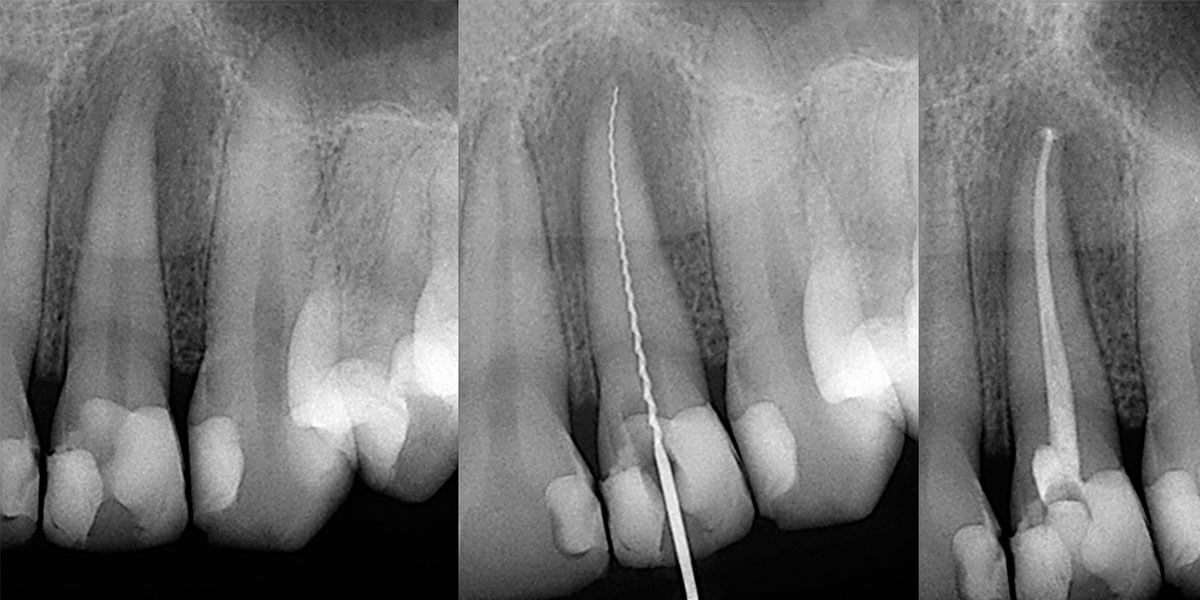Endodontics

Root Canal Treatment
Our primary goal is to save your natural teeth whenever possible. Our doctors are trained in Endodontics, commonly referred to as root canal therapy. Endodontics is the treatment of the pulp and surrounding tissues of a tooth. When root canal therapy is performed the pulp chamber of the tooth is removed and then filled with a suitable filling material. Root canals are most often necessary when decay has reached the nerve of the tooth or the tooth has become infected. People have anywhere from 1 to 4 canals in a tooth. Extra canals may branch out and are called “accessory canals.” The number of canals and anatomy of a tooth can vary. The word “endo” comes from the Greek language and means “inside” or within. Endodontists work with the “inside” of a tooth.
Root canals are most often necessary when decay has reached the nerve of the tooth or the tooth has become infected. When root canal therapy is performed, infected or inflamed pulp is removed from the tooth chamber. The inside of the tooth is then cleaned and disinfected before being filled and sealed to limit the possibility of future infection. Soon after the root canal is performed, the tooth is restored with a dental crown or filling to protect the tooth and restore normal tooth function.
Endodontic Retreatment
Occasionally a tooth that was treated months or years ago may develop new problems. In some cases a tooth that has received endodontic treatment fails to heal or continues to have pain. You may have another chance to save the tooth with a second endodontic procedure.
Apical Surgery
In some cases it may be necessary to remove the infected root tips or apex and the nearby tissue. This is known as a apical surgery or an apicoectomy. The area around the apex of the tooth that is infected is cleaned, and the tip of the root is resected and sealed. Sutures are placed and an ice pack is applied. Medication is prescribed to help alleviate any pain or discomfort and it is best to plan to rest for the remainder of the day. Most patients will have some minor swelling and occasional bruising with some numbness.
